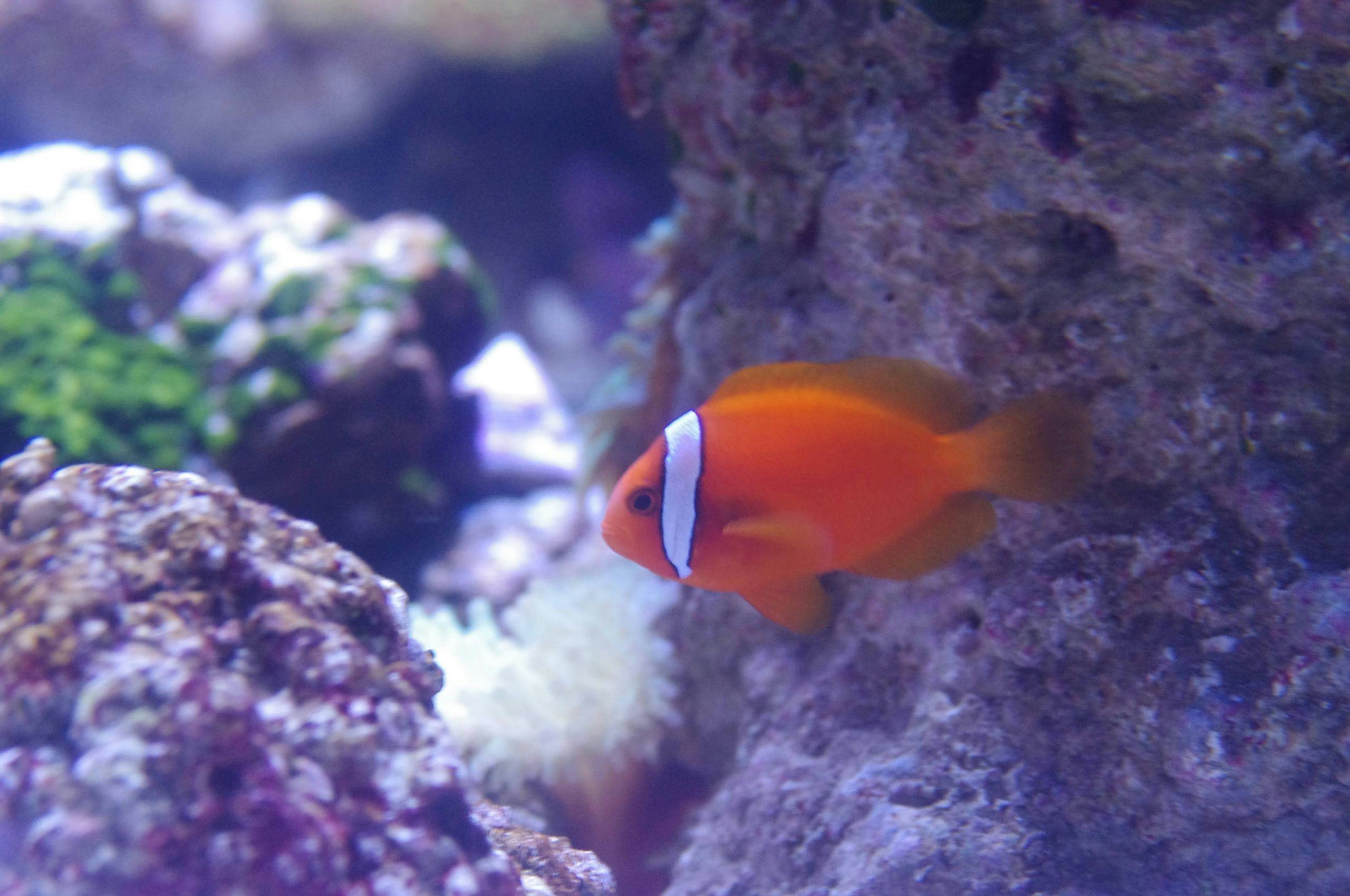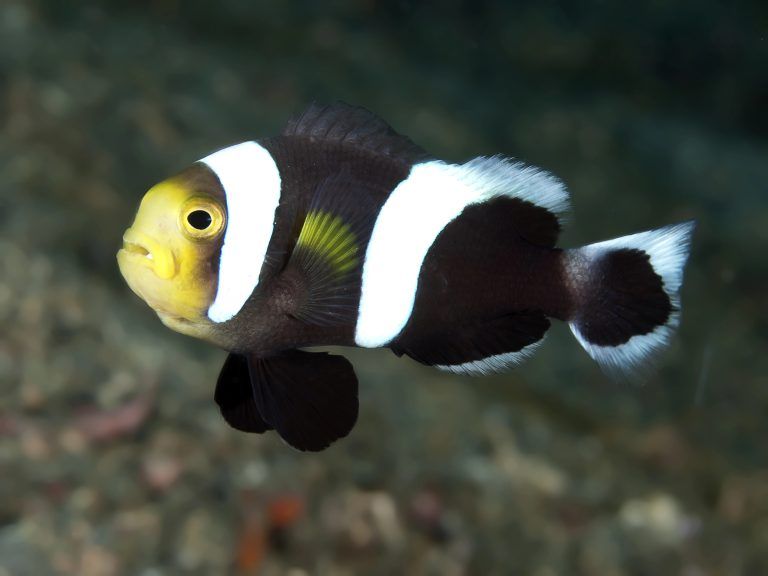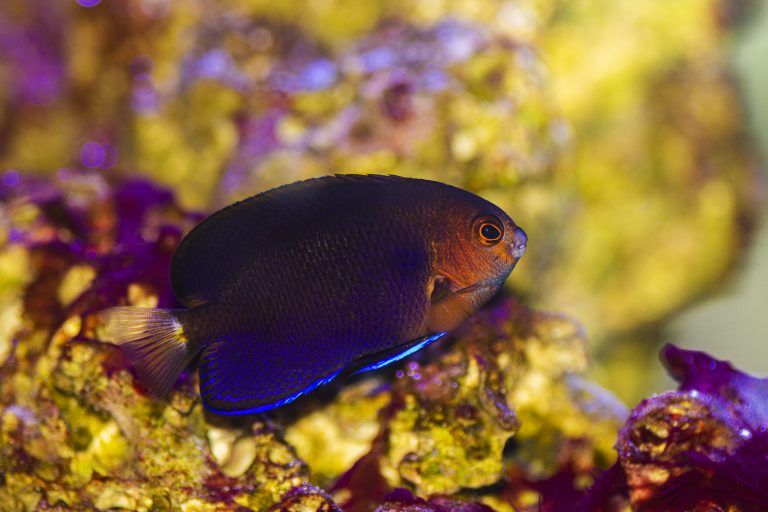The Tomato Clownfish (Amphiprion frenatus) is another species of Clownfish commonly kept in saltwater aquariums. They have beautiful red, orange, and white colorations that make them sort of look like a tomato. Don’t let their amazing appearance fool you, Tomato Clownfish are known to be semi-aggressive, sometimes matching or coming close to the aggression of Maroon Clownfish. For more peaceful Clownfish species, consider checking out Ocellaris, Skunk, or Percula Clownfish. This article will discuss the overall care requirements of the Tomato Clownfish, including aquarium and dietary needs, as well as information on compatible tank mates.
Aquarium Requirements
This fish species can grow to about 5 inches, but they usually slow down growth at around 3 inches. Tomato Clownfish can be kept in aquariums as small as 30 gallons, but I always recommend providing your fish with a larger aquarium, if possible. The aquarium should have an assortment of live rock. Live rock provides the hard structure to give your fish a place to hide. It’s also a natural filtration system for your aquarium. Many people think anemones are mandatory for Clownfish, but they are, in fact, optional. I think adding an anemone is great, if it makes sense for your fish tank. However, it’s something you don’t necessarily need for your Clown. I also recommend a well-fitted lid to help prevent your fish from jumping.
Is the Tomato Clownfish Reef Safe?
Tomato Clownfish are reef safe in the sense that they won’t harm corals, live rock, or most invertebrates like snails and hermit crabs. They are hardy, popular clownfish that do well in reef aquariums. Clownfish are generally a staple in a reef tank. However, if clownfish are looking for a host, they may turn to coral if an anemone is not present, which will stress the coral.
Water Parameters
The Tomato Clownfish thrives in stable, well-maintained saltwater conditions that closely replicate its natural reef environment. The ideal water temperature range for this species is 72° to 78°F, providing a comfortable balance that supports both the fish’s metabolism and immune system. Maintaining a pH between 8.0 and 8.4 is essential, as it mirrors the slightly alkaline nature of ocean water. A carbonate hardness (KH) of 8 to 12 helps stabilize pH levels and ensures proper buffering capacity, preventing sudden swings that could stress the fish. Finally, a specific gravity between 1.020 and 1.025 keeps salinity within the optimal range for marine life, supporting the clownfish’s overall health and well-being. Consistency across all these parameters is key, as fluctuations can lead to stress or disease in this otherwise hardy clownfish.
Did you know there are many tools used to test salinity levels? You can learn about them by checking out “Different Salinity Reading Tools for Saltwater Fish Tanks”.
Food & Diet
Being omnivores, Tomato Clownfish can be provided with an assortment of food. I recommend feeding them a combination of pellet food, flake food, and frozen foods, such as Mysis Shrimp and Brine Shrimp, which are rich in protein. Similar to other Clownfish species, Tomato Clowns usually have no issue with accepting food after being introduced into an aquarium. If you have stubborn fish, that refuse to eat, try feeding them other foods or soak your foods in garlic extract. Check out Garlic and Feeding Fish to seem some benefits of giving garlic enriched foods to fish.
Tank Mates
In an appropriately sized fish tank, peaceful to semi-aggressive fish should generally be ok with Tomato Clownfish. Marine fish such as Blennies, Dottybacks, Foxface, Gobies, Cardinalfish, Dwarf Angelfish, Hawkfish, Tangs, and Wrasses should have little to no issue with Tomato Clowns. Just remember that when dealing with animals, each individual has its unique personality. Within a species, there can be fish that have a completely different temperament compared to others.
I recommend keeping aggressive fish away from Tomato Clownfish. This includes large Wrasses, Triggers, Lionfish, and large Groupers, to name a few. These fish are either incredibly aggressive or they have large enough appetites to try and eat your Clownfish.
Tomato Clownfish and Anemones
Anemones and Clownfish go hand in hand in the wild. In an aquarium, anemones can be optional for Clownfish. Tank-raised Clownfish may not choose to be hosted by an anemone outright. However, with a few tricks, it’s possible to get them interested in an anemone. Bubble Tip Anemones and Carpet Anemones are the best options for Tomato Clownfish. You can check out a more in-depth Clownfish/Anemone Chart on FishLore.
Breeding
Tomato Clownfish might end up breeding in your aquarium on their own without human interference. Unfortunately, the eggs that are laid will often be preyed upon by other fish or the parents. If you want to breed Clownfish successfully and have the offspring successfully hatch and grow, you’ll have to take part in the process. I have not bred Tomato Clownfish, but there are plenty of resources on the subject. Check out OcellarisClownfish.com for a general method of breeding Clownfish, which may work for Tomato Clowns as well.
Final Notes
If you’re looking for the most peaceful Clownfish species, consider looking up Skunk Clownfish or Ocellaris Clownfish. They are considered more peaceful compared to Tomato, Maroon, and other Clownfish species. Tomato Clownfish add gorgeous fish with unique personalities. Although they’re not the most popular species kept in a fish tank, they’re still a fantastic option.
Thanks for clicking this tab, this is planned for a future feature of this website!



